Virtual Reality in Africa
Stepping into the world of Virtual Reality filmmaking

Film set for our Virtual reality 48HR film shoot
In October 2017 I was lucky enough to be chosen as one of 12 artists to participate in the first ever 48 Hour Virtual Reality Filmmaking Jam in South Africa. I learnt a hell of a lot about the difference between traditional filmmaking and shooting for Virtual Reality.
Apart from once experiencing a VR world through the HTC Vive, the above event was my first ever experience of viewing VR films, working with 360 degree cameras and WondaVR software. My takeaway from the event: Virtual Reality in Africa is going to blossom.
From a scriptwriting, performance and a directorial point of view, there are quite a few differences between VR and traditional filmmaking techniques. I will elaborate on what I have learnt, below.
First though, a little bit about my background. Professionally, I am a voice over artist. I also teach Stop Motion Animation at a tertiary educational institute. As such, sound, dialogue and storytelling is of great importance to me.
I am also busy producing a binaural audio book project named “RED”. RED is a retelling of the Little Red Riding Hood fairytale, with an African twist. The location for the action is set in the South African bushveld and our big-bad-wolf is a spotted hyena. It is my intention to use this project as a springboard to develop audio for a VR version of RED. More about this, once the project is complete .
Below are my thoughts on the filmmaking process for Virtual Reality live action films. Much of what I mention could be valid in gaming environments as well. At the 48hr Jam, however, we focussed on using actors instead of animation, mostly due to our time constraints.
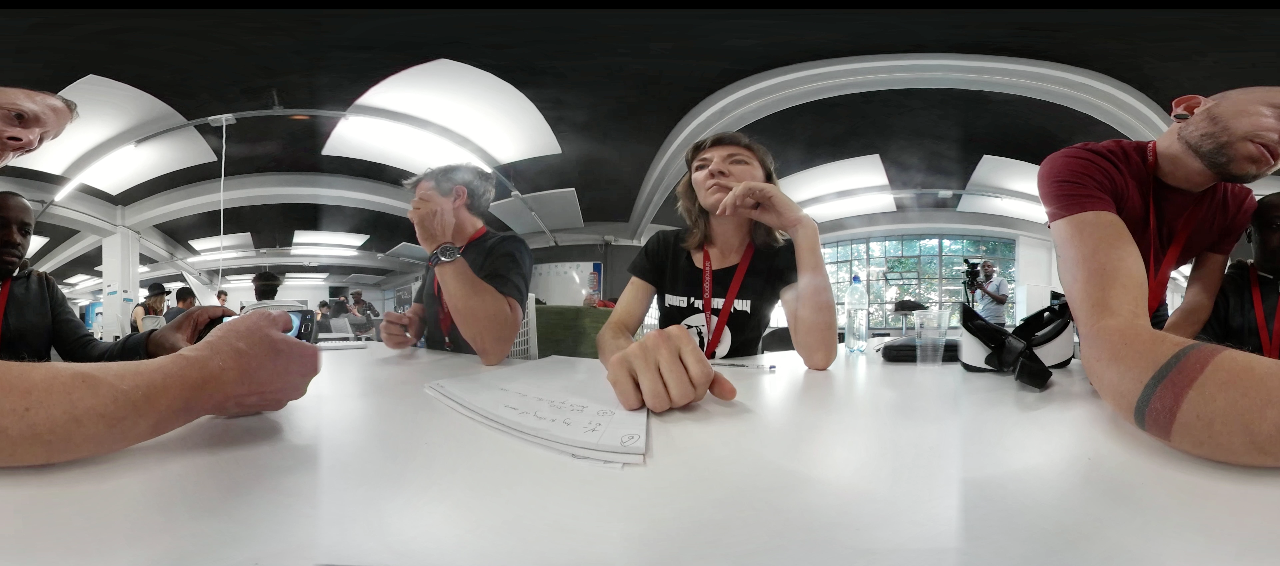
VR Brainstorming at Tshimologong Joburg.
How to shoot VR:
User POV and time-space relationships
The most obvious aspect of VR filmmaking is the fact that the user can choose where he or she wants to look. I see this as both a positive and negative aspect of VR, depending on what your aims and intentions are for your film. If your VR film is narrative based, you would want to guide your viewer’s attention in some way, so that they would, literally, not lose the plot. You can manipulate the user’s attention through verbal commands, actions, sounds and visual instructions. It is this aspect of VR filmmaking which is most intriguing to me. What a challenge to try and manipulate the viewer’s attention. It borders on the theatrical.
VR filmmaking definitely shares similarities with the theatre-making process. As a classically trained actress, I appreciate the fact that you get one shot at completing the scene. If you make a mistake, for the most part, you would need to reshoot. This demands that you rehearse your action and choreograph where your actors need to be at any given moment. Just like in theatre, you need to wait for your cue, to engage in your part of the scene. An exciting new aspect is that you work with time and space simultaneously, knowing full well that the viewer can enter that space and change the timeline, as he or she pleases.
I came across a quote from Australia-based Scott Wright, artistic director for Erth, who said that VR heightens observation “in a way that film can’t.”
I do believe this is true, as the viewer/ user is free to discover any aspect of the scene he is submerged in and can, for the most part, return to look at a specific detail as many times as he wants. My future interest in VR filmmaking will definitely focus on this time-space relationship between the filmmaker and the viewer. I will definitely like to explore and push the limits of how much of the user’s attention a filmmaker can manipulate. What meaning can be elicited from the “happy accidents” when users explore the VR space and choose to work against the cues left by the filmmaker?
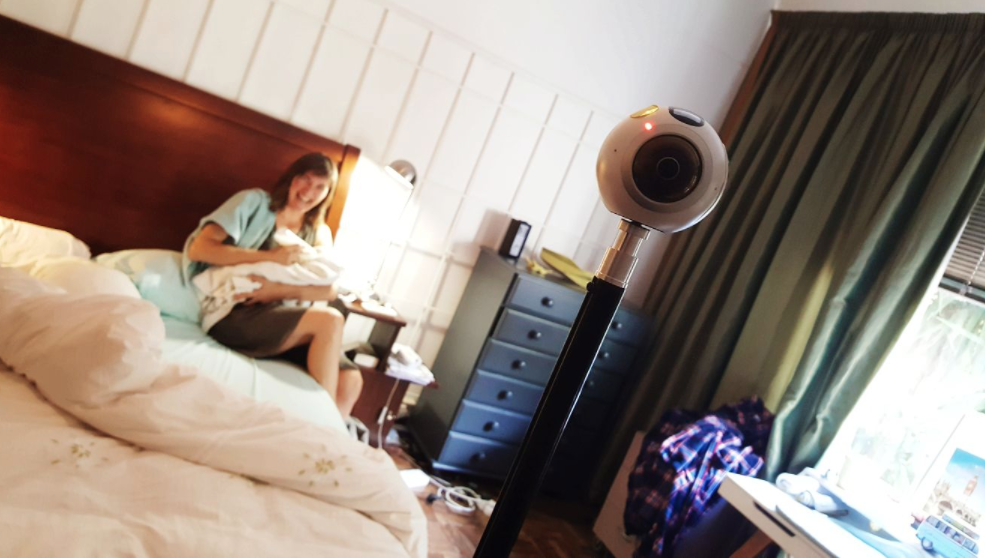
Performing on set. Photo by Florian Pannetier.
Immersiveness
I use the word submerged in the above paragraph, instead of calling VR an immersive experience. To me it really feels like you go beneath the surface, you dive into a different medium, with different qualities. You cannot escape this world, unless you take off your gear or get into contact with a surface in the “real” world, which may break the illusion. You need to come up for air, if you want to leave that world.
In film language we use the term “suspension of belief” to describe the viewer’s willingness to “buy into” the world displayed to them on their screen. To truly believe in the realism (fiction or documentary), which is being shown to them. Dictionary.com describes this term as “a willingness to suspend one’s critical faculties and believe the unbelievable; sacrifice of realism and logic for the sake of enjoyment”. VR definitely lives up to this description.
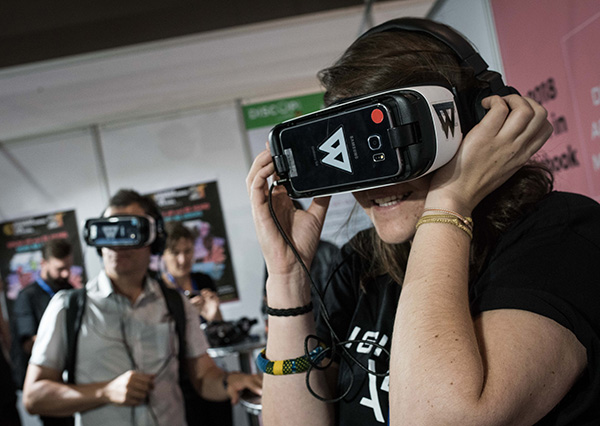
Participants at DISCOP trying out our VR films. Photo by Daylin Paul
I like the term coined by Montreal-based cinematic virtual reality studio Felix and Paul Studios, calling VR “presence-based storytelling”. For a specific film they wanted “to embrace presence in a very raw, pure, and unfiltered way…to make this all about presence, intimacy, and experiencing a sense of human connection with someone who is not really there; and to nurture that relationship between the viewer and the character”. What untapped opportunity this holds for the VR scriptwriter.
Much negative sentiment has also been directed at the immersiveness of VR, believers of this view stating that this aspect of VR will have limited use in any field other than Gaming. I don’t agree.
Time will tell just how many industries and to what degree, the power of VR will be harnessed to create simulations of real-life and fantastical experiences. If the current amount of research and investment in VR start-up companies are anything to go by, I would say that VR is still very much a contender for use in just about all industries of trade and entertainment.
I definitely feel VR can greatly assist in the Education and Training spheres. Trainees are able to redo action over and over again, play with different scenarios which would deliver different outcomes, thus focusing on cause and effect. VR could be of great benefit to the schools of thought behind experiential learning and learning-by-doing. And still VR in education is promising to do so much more…
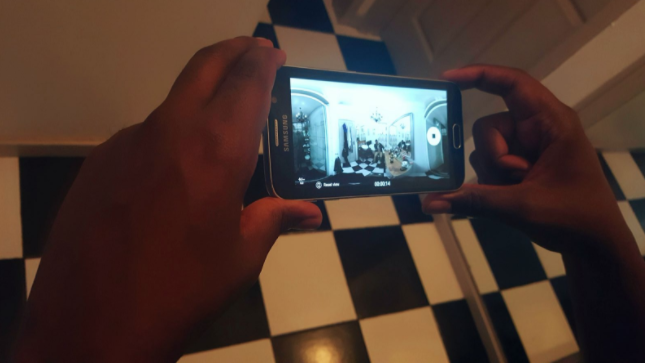
Checking stitch-lines on set. Photo by Florian Pannetier.
Redefining storytelling structure
Screenwriters and directors need to completely rethink their storytelling structure for VR films. As mentioned before, the user’s relationship with time and space on screen, is completely disrupted. The user can hop between “worlds” and scenarios, skip certain scenes and revisit others as many times as they wish. This aspect calls for a complete rethinking of how to tell stories in VR and how to create non-linear VR experiences. Another aspect of VR filmmaking I look forward to exploring further.
Some negative aspects of the VR filmmaking process and experience as a viewer of VR films.
From the user’s point of view, it seems to be a lonely experience, for the moment at least. There are no multi-player/participant options available yet, though I do believe research is being done on this aspect of VR. For the moment though, we are reduced to wearing headgear and headphones, on our solitary quest to suspend our disbelief and enjoy the ride, on our own or with pre-created virtual partners.
From my experience at the 48 Hour Jam, it also became clear that if you don’t follow the instructions or cues given to you in the VR experience, you can get stuck in a loop. You can experiencing the same scene over and over again, unable to move forward, the only solution being to start over or take your gear off and ask for assistance.
The highlight of the 48HR jam, was undoubtedly showcasing our work at DISCOP Johannesburg.
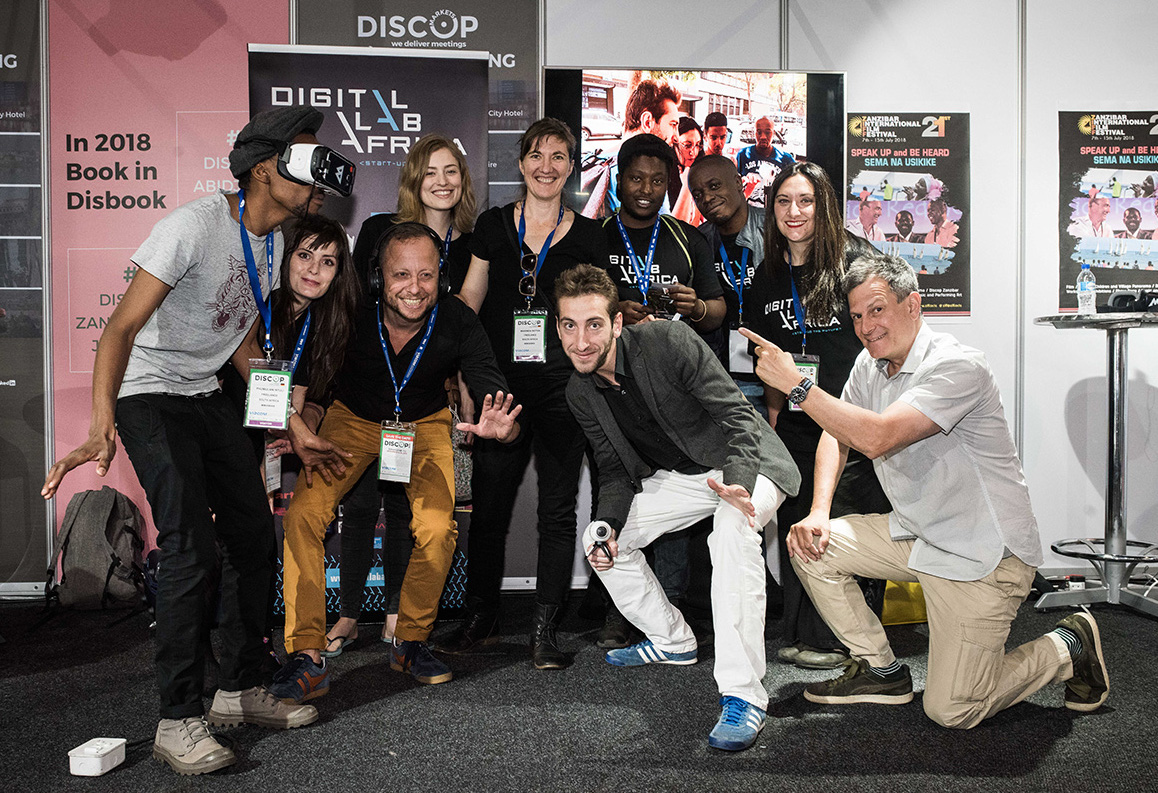
Artists and mentors of the 48HR VR Jam. Photo by Daylin Paul.
The above aspect became very clear at the event. Participants were eager to try out the technology, but needed to be told what to do or to expect, before wearing the hardware and entering their VR experience. I do believe that early users will be unsure how to use this new medium and would require clear instructions upfront.

Trying to explain what to expect in VR. Photo by Daylin Paul.
From a filmmaking point of view, the stitch lines were a constant hindrance, dictating the composition of shots and action. I am unsure how much can be done about this. It may just be an aspect of VR filmmaking one will have to embrace.
Lastly, I look forward to improvements in the hardware. At times, the head-mounted displays felt clunky and cumbersome. I do believe that as soon as headgear can be reduced to the size of normal sunglasses, VR technology applications and products will grow exponentially.
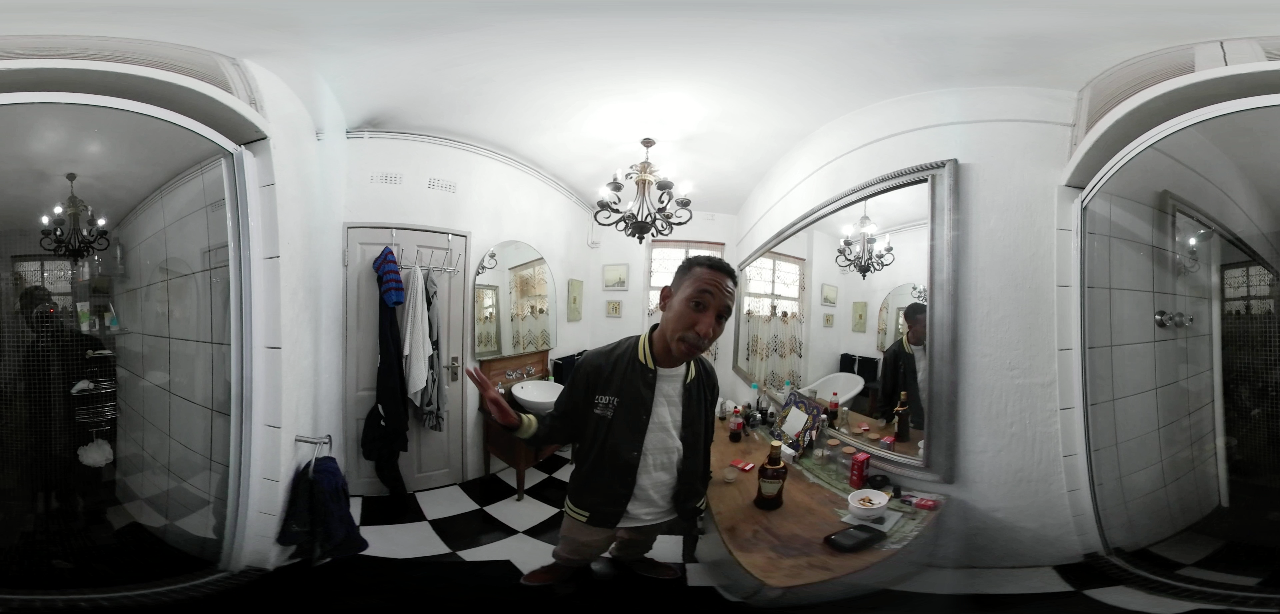
Actor Chad Minnaar on set at the 48HR VR Film Jam
In conclusion, it was such a blast to be involved in the first ever 48 Hour VR filmmaking Jam in Africa. The event has certainly opened up my eyes to new ways of creating compelling stories. My thanks to Digilab Africa and all the partners, for making it happen. VR in Africa will certainly grow from this. I look forward to seeing what the future holds.
Written by Marinda Botha
South Africa-based voice artist, performer, audio director/ producer and educator. http://marindabotha.co.uk/voice-work/
